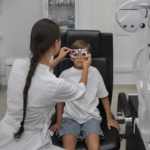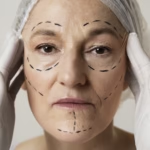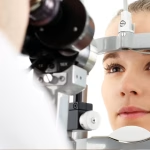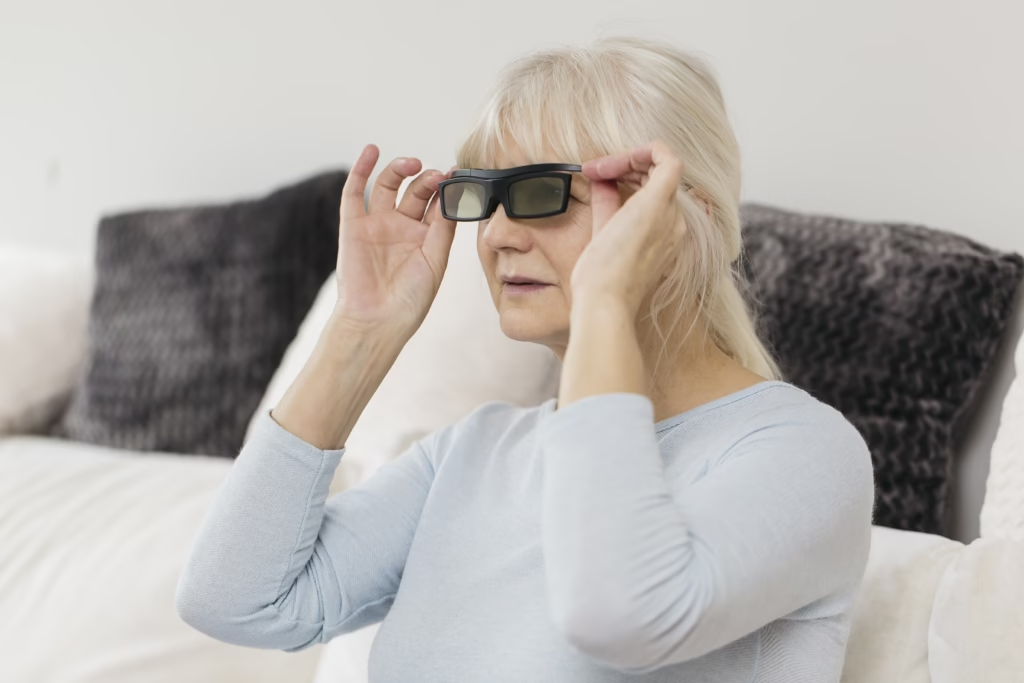Our eyes are complex organs that allow us to interpret the world around us. While central vision helps us focus on what is directly in front, peripheral vision gives us awareness of everything around movements, shapes and light outside our direct line of sight. When this ability weakens, people experience what is called peripheral vision loss and sometimes described as tunnel vision.
At Leevision Eye and Aesthetic Clinic, we see many patients who notice difficulty detecting movement or objects from the sides of their eyes. In some cases, it happens gradually while in others, it appears suddenly, both situations require prompt professional attention.
This article explores the causes, symptoms and best treatment options for peripheral vision loss, helping you understand when to seek care and how to protect your vision for the long term.
What Is Peripheral Vision Loss?
Peripheral vision loss refers to a reduction or complete absence of side vision while central vision remains relatively normal. People often describe it as seeing through a tunnel, where objects at the centre are clear but surroundings fade away.
You might notice:
- Difficulty navigating crowded areas
- Trouble driving, especially at night
- Bumping into objects on the sides
- Needing to move your head to see things that used to be visible without turning
These peripheral vision problems can occur in one or both eyes and depending on the cause, the loss can be gradual or sudden.

Loss of Peripheral Vision in One Eye
When patients experience loss of peripheral vision in one eye, it often indicates an issue localized to that specific eye such as:
- Retinal detachment – where the retina separates from the back of the eye, requiring emergency care.
- Glaucoma – chronic high eye pressure damaging the optic nerve over time.
- Vascular occlusion – blockage of blood flow to the retina.
If you ever notice a sudden loss of peripheral vision in one eye, it is critical to contact an ophthalmologist immediately. At Leevision, our specialists perform comprehensive eye exams and advanced retinal imaging to detect the root cause and begin treatment quickly.
Neurological Causes of Loss of Peripheral Vision
Not all cases originate in the eye itself. Some result from neurological causes of loss of peripheral vision, meaning the problem lies within the brain or optic nerve pathways. Common neurological factors include:
- Stroke – Damage to visual processing centre in the brain can result in partial visual field loss.
- Traumatic brain injury (TBI) – Head injuries can impact the optic nerve or occipital lobe.
- Brain tumors or lesions – Growths that compress the optic tract.
- Optic neuritis – Inflammation of the optic nerve, often related to multiple sclerosis.
Leevision’s multidisciplinary approach ensures collaboration between eye specialists and neurologists when neurological involvement is suspected, providing a complete diagnostic pathway.
Sudden Peripheral Vision Loss
A sudden peripheral vision loss can be alarming. Unlike gradual vision decline, this type of loss happens within hours or days and may indicate a medical emergency. Possible causes include:
- Retinal tear or detachment
- Acute glaucoma attack
- Ocular migraine
- Optic nerve inflammation or swelling
- Blood vessel blockage in the retina
If you experience flashing lights, a shadow in your vision or sudden narrowing of your visual field, seek immediate medical care. At Leevision, emergency diagnostic imaging and prompt laser or surgical treatment can often preserve remaining vision.
Common Symptoms of Peripheral Vision Problems
Peripheral vision loss can present subtly at first. Symptoms may include:
- Difficulty detecting moving objects on the side
- Frequently turning your head to look around
- Poor balance or coordination
- Struggling to read or recognize faces in crowded areas
- Increased risk of tripping or falling
People often adapt unconsciously, so regular eye exams at Leevision are essential to identify early field changes before they interfere with daily life.
Diagnosing Peripheral Vision Loss
At Leevision Eye & Aesthetic Clinic, our diagnostic process involves:
- Comprehensive Eye Examination – To evaluate visual acuity and eye pressure.
- Visual Field Test (Perimetry) – Measures the range of your side vision.
- OCT (Optical Coherence Tomography) – Creates detailed images of retinal layers.
- Fundus Examination – Examines the optic nerve and retina directly.
- Neurological Assessment – If a brain-related cause is suspected.
This holistic diagnostic process ensures no underlying issue is missed.
Best Treatment Options for Peripheral Vision Loss
The treatment for peripheral vision loss depends on its underlying cause. While complete restoration may not always be possible, early intervention can prevent further loss and maximize remaining sight.
- Glaucoma Management
For patients with glaucoma treatment aims to reduce intraocular pressure.
- Prescription eye drops
- Laser therapy (Trabeculoplasty)
- Surgery (Trabeculectomy or drainage implants)
- Retinal Detachment Repair
Emergency surgery is needed to reattach the retina and restore circulation. Options include:
- Laser photocoagulation
- Cryotherapy (freezing technique)
- Vitrectomy surgery
- Treating Inflammation or Infection
When optic neuritis or infections are present:
- Corticosteroids or antibiotics may be prescribed.
- Ongoing monitoring ensures inflammation subsides completely.
- Addressing Neurological Causes
If the loss stems from a brain condition:
- Neurological imaging (MRI/CT) is performed.
- Treatment focuses on the root cause (e.g., stroke management or tumor removal).
- Lifestyle & Preventive Measures
- Maintain normal blood pressure and blood sugar levels.
- Eat foods rich in lutein, zeaxanthin and omega-3 fatty acids.
- Protect eyes from UV radiation with sunglasses.
- Have regular eye exams at Leevision, especially after age 40.
Living with Peripheral Vision Loss
Adapting to vision loss can be challenging, but low-vision rehabilitation and assistive devices can help. Specialists at Leevision may recommend:
- Field expansion prisms in glasses
- Orientation and mobility training
- Lighting adjustments for better visibility
- Regular follow-ups for monitoring progression
With consistent care, patients can maintain independence and safety even with partial vision impairment.
Frequently Asked Questions:
- What causes peripheral vision loss?
Common causes include glaucoma, retinal detachment, optic nerve damage and neurological conditions like stroke. - Can peripheral vision loss occur in one eye only?
Yes, loss of peripheral vision in one eye is often linked to localized eye conditions such as retinal detachment or vascular blockage. - Is sudden peripheral vision loss reversible?
It depends on the cause. Some conditions, like retinal detachment can be treated if addressed quickly. - What are neurological causes of loss of peripheral vision?
Stroke, brain tumors or optic neuritis can lead to peripheral vision deficits. - How is peripheral vision tested?
A visual field test maps your sight range to detect blind spots or narrowing. - Can peripheral vision be restored?
In some cases, partial improvement is possible with prompt treatment, but prevention of further damage is key. - How can I prevent peripheral vision problems?
Regular eye exams, controlling blood sugar and pressure and avoiding eye strain help reduce risk. - When should I see a doctor for peripheral vision loss?
Seek immediate help if you notice sudden loss of peripheral vision in one eye or experience flashing lights or shadows. - Can lifestyle changes improve peripheral vision?
While they may not restore lost vision, maintaining a healthy lifestyle supports overall eye health. - Where can I get expert treatment for peripheral vision loss?
At Leevision Eye & Aesthetic Clinic, specialists provide comprehensive diagnosis, advanced treatment options and ongoing care for all types of vision loss.
Conclusion:
Peripheral vision loss is more than just a minor inconvenience, it can drastically affect mobility, confidence and quality of life. Whether caused by glaucoma, retinal damage or neurological issues, early diagnosis and prompt intervention are crucial.
At Leevision Eye & Aesthetic Clinic, our mission is to protect your vision using advanced technology, personalized care and proven medical expertise. If you experience any signs of sudden peripheral vision loss or notice changes in your side vision, do not wait, schedule an eye examination today and take the first step toward preserving your sight.














